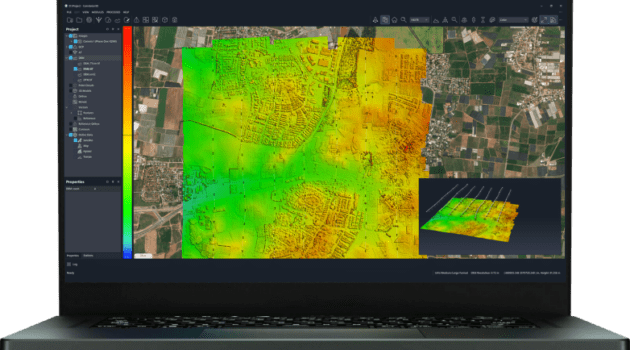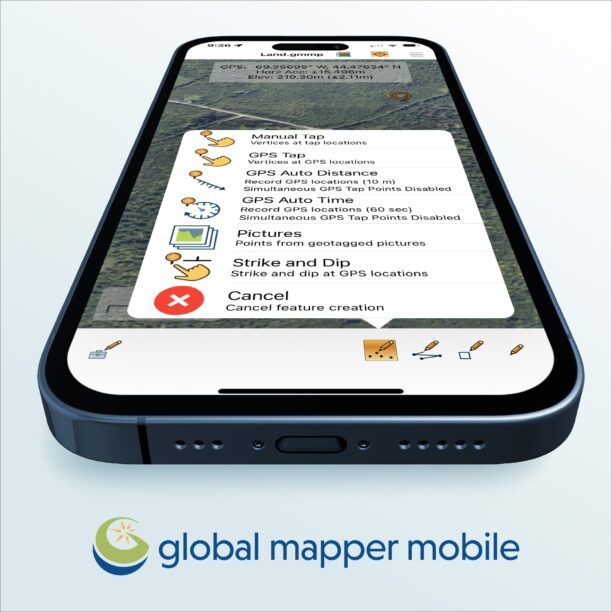
As drone technology continues to transform the battlefield, the demand for fast, flexible, and user-friendly mapping solutions has never been higher. One company at the forefront of this transformation is SimActive, a leader in geospatial data processing for both military and commercial operations. In an exclusive interview with DRONELIFE, SimActive’s Co-founder and CEO Philippe Simard shares insights into the company’s origins, technological advancements, and the critical role that mapping software plays in modern military operations.
The Birth of SimActive: A Military Genesis

SimActive was founded with a mission to address the specific needs of the Canadian military. Philippe Simard recalls, “The Canadian army was involved in Afghanistan back then. They had team rotations every six months. It took way too long to train their personnel for doing photogrammetry. They were looking for a simpler and faster photogrammetry suite. They gave us a multi-year contract to develop that capability for them.” This initial collaboration laid the groundwork for what would become a game-changer in military mapping technology: SimActive’s Correlator3D™.
The primary challenges were clear: the need for rapid processing of imagery to produce core products such as Digital Elevation Models (DEMs) and Orthomosaics. These tools were essential for coordinating military activities, providing a seamless geospatial view of operational areas, pinpointing soldiers, assets, and potential targets, and aiding in troop movement and artillery positioning.
Technological Evolution: From Aircraft to Drones
Since its inception, SimActive has continually evolved, investing heavily in the development of its solutions. The company saw the benefits of commercial drones early on. Simard explains, “The software was originally developed for large-format cameras mounted on aircraft, then later adapted for satellite processing. Ten years ago, we started supporting drone imagery as well, with smaller and non-metric sensors.” This adaptability has allowed SimActive to stay ahead of the curve, integrating key technological advancements over the years.
At the same time, they’ve continually improved their mapping technologies. One significant advancement is the improved DSM (Digital Surface Model) generation from imagery, which now captures more detailed information on facades, creating more accurate DEMs and Point Clouds. These enhanced capabilities enable the production of colorized point clouds and the ability to colorize existing LiDAR point clouds, offering unparalleled accuracy and detail.
Versatility in Data Integration: A Game-Changer for Military Operations
One of the standout features of SimActive’s Correlator3D™ is its ability to integrate data from various sources, including drones, manned aircraft, and satellites. This versatility is invaluable in military operations. “Our software accepts imagery regardless of the platform it is captured on. Imagery from any of the formats can be combined to allow for rapid processing of areas of interest,” says Simard.
He provides a compelling example: “The output products, DEMs and Orthomosaics from one project, can be imported into newer, more recent projects to speed up processing. Older imagery and surfaces can be used in place of ground control and as a reference. They can also be used in change detection to determine troop or asset movement and damage assessment, which is extremely useful when monitoring a location over time.”
Real-World Impact: Case Studies in Military Use
The real-world applications of SimActive’s software are extensive and impactful. Simard shares a notable case study: “After Hurricane Irma hit St. Martin, the French military arrived with a squadron of drones and were able to capture and rapidly process ortho imagery of the island, while on the island. These datasets were then used to aid in recovery efforts and for damage assessment. In this instance, drones were more effective in capturing this data than larger aircraft due to typical windy conditions, cloud cover, and other post-storm factors.”
Speed and Efficiency: Meeting Military Demands
Speed and ease of use are crucial in military applications, and Correlator3D™ delivers on these needs. Simard emphasizes, “When working with drones, data captured needs to be processed in the field right after a mission occasionally. However, there are also times when a project is so large that it may be sent to a group of contractors that are not in theatre, processing together to create the deliverables needed.”
For larger aircraft missions, the software’s rapid processing capabilities are equally vital. “Our military clients often fly 24/7 with much larger sensors, producing vast amounts of data per mission. These clients rely on the speed of Correlator3D™ to process these large datasets rapidly.”
Ensuring Precision and Accuracy
Accuracy is paramount in military mapping, and SimActive ensures precision through robust photogrammetric principles. Simard notes, “Our workflows are designed to ingest both imagery and the orientations from onboard GPS systems and high-quality positioning systems (IMUs) to ensure the highest level of accuracy.”
One unique feature of Correlator3D™ is its capability for assisted Ground Control Point (GCP) identification and the ability to create additional GCPs from LiDAR surfaces and reference imagery. This is particularly useful when boots-on-the-ground surveys are not feasible.
User Experience and Training
Understanding the varying technical backgrounds of military personnel, SimActive has focused on making Correlator3D™ user-friendly. “We offer a fully automated workflow based on the users’ output needs, as well as the ability to work through a series of modules where the user can validate outputs in each step. In either case, it’s very easy and intuitive to run Correlator3D™,” says Simard.
To ensure military users can fully utilize the software’s capabilities, SimActive provides extensive training and support, including online tutorials, customized training sessions, and a comprehensive library of resources available on their website.
Looking Ahead: Future Developments
SimActive remains committed to staying ahead of emerging trends and technologies in military mapping. Simard reveals, “In our upcoming release scheduled for later this summer, we’ve completely revamped our mosaic editing tools based on feedback from our military users. This allows for more intuitive and faster editing of orthomosaics.”
The company’s agile approach to software development ensures they remain in sync with the evolving needs of their military partners, continually enhancing their capabilities to support new sensor technologies and advanced imaging techniques.
SimActive collaborates extensively with other technology providers and military organizations to enhance its software’s capabilities. “Many of the sensors being developed for military use carry more than just imaging technology. This involves collaborating with hardware providers to ensure that Correlator3D™ can benefit the users from these advancements in technology with minimal change to their processing workflows,” says Simard.
Feedback from military users is integral to SimActive’s continuous improvement process. The upcoming version of Correlator3D™ includes numerous enhancements suggested by military clients, such as the new ortho mosaic editing tools.
As drone technology reshapes the battlefield, the ability to rapidly process and integrate diverse data sources becomes increasingly vital. With a strong foundation in military needs and a commitment to continuous innovation, SimActive is poised to remain a leader in geospatial data processing for years to come.
Read more:
- SimActive Implements Enhanced Workflow for Phase One 280MP Aerial System
- SimActive Enhances Correlator3D with Multi-Camera System Compatibility
- SimActive Photogrammetry Software: Enabling Users to Meet Accuracy Standards for Over 20 Years
Miriam McNabb is the Editor-in-Chief of DRONELIFE and CEO of JobForDrones, a professional drone services marketplace, and a fascinated observer of the emerging drone industry and the regulatory environment for drones. Miriam has penned over 3,000 articles focused on the commercial drone space and is an international speaker and recognized figure in the industry. Miriam has a degree from the University of Chicago and over 20 years of experience in high tech sales and marketing for new technologies.
For drone industry consulting or writing, Email Miriam.
TWITTER:@spaldingbarker
Subscribe to DroneLife here.







Very good article about your interview with SimActive CEO, Mr Simard.
It gives a good overview of the capabilities of the iconic photogrammetry software Correlator 3D and is very relevant in this magazine.